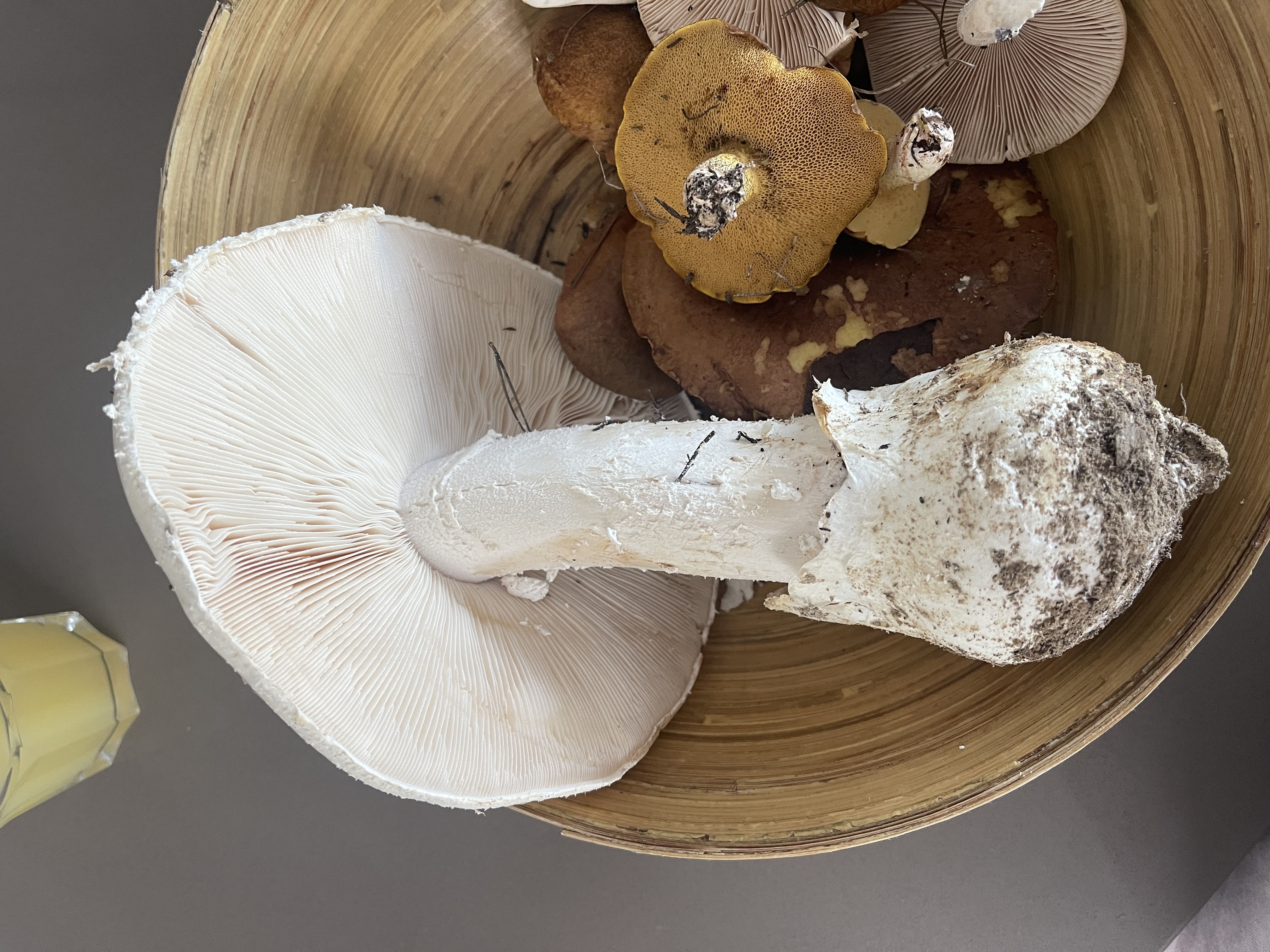European Destroying Angel
Amanita verna
EXTREME RISK: FEATURES CONSISTENT WITH DEADLY AMANITA SPECIES

1 / 4
Alle Bilder (4)
Hauptmerkmale
- Large
- pure white cap
- smooth surface
- Gills are free
- crowded
- and pure white
- Robust
- white stem with a bulbous base
- Base structure suggests remnants of a universal veil (volva)
- No visible ring (annulus) on the stem shaft
- Flesh does not appear to stain or bruise color
Farbe:
Pure white (cap, gills, stem)
Geruch:
Unknown (often mild or slightly unpleasant)
Wuchsform:
Single
Umgebung:
Soil
Lebensraum & Verbreitung
Lebensraum:
Deciduous or mixed forest floor, often near oaks or chestnuts
Verbreitung:
Mediterranean Europe, including Spain (Alicante region)
Saisonalität:
Spring to Autumn
Zur sicheren Bestimmung
- Spore print color is unknown (critical for distinguishing Amanita from Agaricus)
- Full volva structure is obscured by damage/soil
- Multiple mushroom species present in the collection
Wirtschaftlicher Wert
Marktnachfrage:
None - toxic
Preisspanne:
N/A
Kommerzielle Nutzung:
None
Informationen zur Giftigkeit
Symptome:
- Severe gastrointestinal distress (delayed 6-24 hours)
- False remission period
- Liver and kidney failure
- Coma and death
Eintrittszeit:
6 to 24 hours post-ingestion
Erste Hilfe:
- Contact emergency services immediately
- Do not induce vomiting unless instructed by medical personnel
Notfallkontakte:
- 112 (EU Emergency)
- 112 (Spain Poison Control)
Ähnliche Arten
Death Cap (White Form)
Amanita phalloides
Hauptunterschiede:
- Typically has a greenish or yellowish cap tint
- Often possesses a distinct, skirt-like ring (annulus)
- Volva is usually more sac-like and distinct
Destroying Angel
Amanita virosa
Hauptunterschiede:
- Often has a shaggier or woollier stem surface
- Cap may be conical rather than broadly convex
Horse Mushroom
Agaricus arvensis
Hauptunterschiede:
- Gills start white but quickly turn pink, then dark brown/black
- Spore print is dark brown, not white
- Lacks a true volva at the base
Empfohlene Handlung
Immediate disposal of all collected specimens. If ingestion has occurred, seek emergency medical attention immediately.